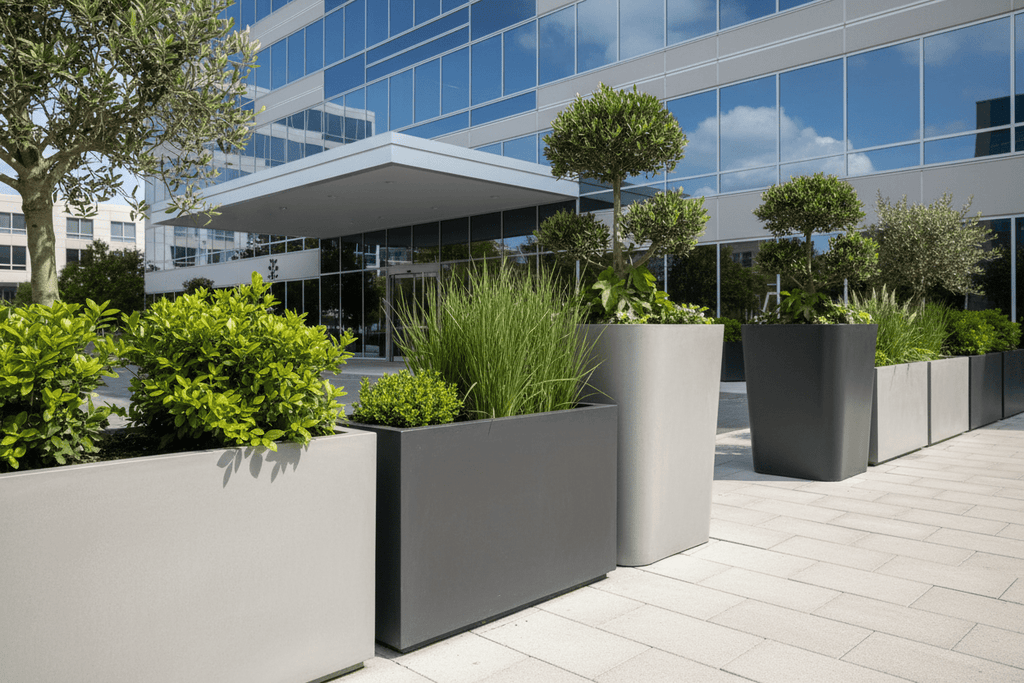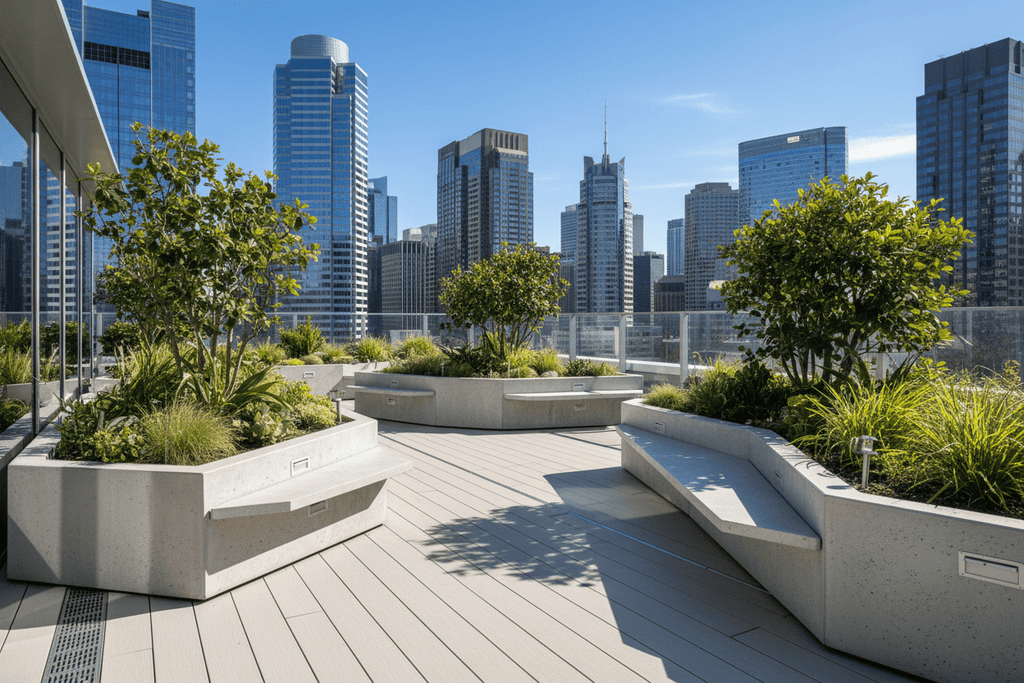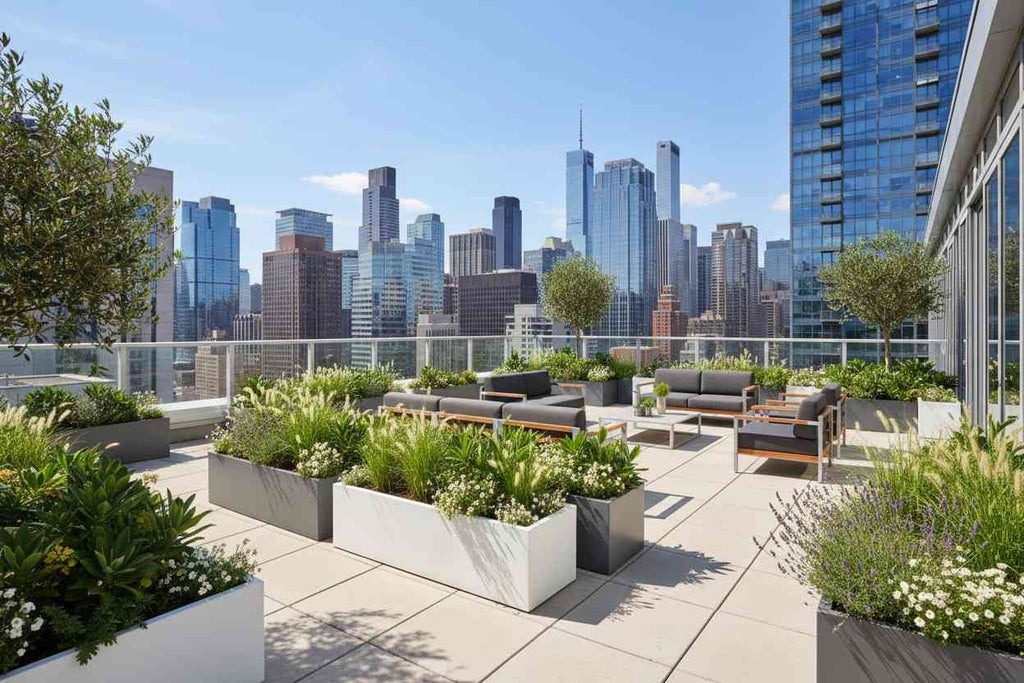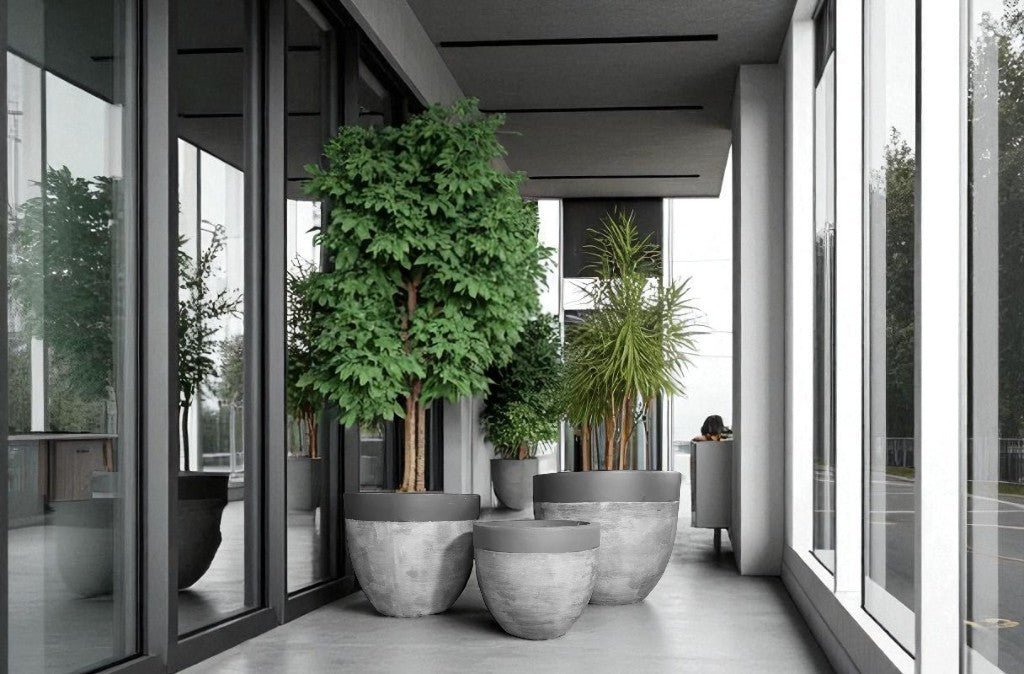
Top 10 Materials for Durable Outdoor Planters (And Which One Lasts Longest)

Choosing the right material for your outdoor planter isn’t just about looks, it’s the key to long-term durability, plant health, and curb appeal. Whether you’re designing a modern balcony, a classic courtyard, or a contemporary patio, your planter’s material will determine how it holds up to rain, heat, and frost.
Each material brings its own charm: some are sleek and modern, others rustic and antique. But when it comes to durability, some options clearly outperform others.
What Material Is Best for Commercial Outdoor Planters?
1. GFRC (Glass Fiber Reinforced Concrete) Planters
GFRC stands for Glass Fiber Reinforced Concrete, one of the strongest and most innovative planter materials available today. Unlike traditional concrete, GFRC uses glass fibers to add strength and flexibility, making it crack-resistant, lightweight, and weather-proof.
These planters thrive in both residential gardens and high-traffic commercial settings, offering sleek designs that complement modern architecture.
Best for: Modern gardens, patios, rooftops, and hotels
Key benefit: Combines strength with a refined finish
Explore our durable GFRC Modern planters.
2. Concrete Planters
Concrete planters are known for their solid structure and impressive weight - perfect for anchoring large trees and shrubs. Their mass keeps plants stable in windy areas, and their natural texture fits rustic or antique designs beautifully.
However, traditional concrete can chip or crack over time, especially in regions with freeze-thaw cycles.
Best for: Ground gardens, rustic patios, antique landscapes
Keep in mind: Heavy and may need a firm base
3. Fiberglass Planters
Fiberglass is the go-to choice for urban gardeners who value both strength and portability. It’s lightweight yet durable, and can mimic high-end finishes like ceramic, stone, or even metal.
Its smooth surface and weather resistance make fiberglass perfect for balconies or terraces where weight and maintenance matter.
Best for: Modern spaces, small terraces, indoor-outdoor transitions
Pro tip: Ideal if you like moving planters seasonally
Browse our modern planter outdoor collection.
4. Metal Planters (Iron, Aluminum, Steel)
If you love a sleek, industrial look, metal planters, especially in steel, aluminum, or iron, make a striking statement. They’re sturdy and long-lasting but can heat up quickly in direct sunlight, which may affect root health.
To prevent rust, choose powder-coated or galvanized finishes.
Best for: Minimalist and modern outdoor décor
Tip: Avoid placing them in full sun for heat-sensitive plants
5. Terracotta Planters
Terracotta planters bring a timeless, earthy charm that never goes out of style. Their porous texture allows roots to breathe, but that same quality makes them vulnerable to frost and moisture damage.
They’re perfect for antique garden designs or Mediterranean-style patios.
Best for: Warm, dry climates
Keep indoors during freezing temperatures
6. Ceramic Planters
Known for their glazed elegance, ceramic planters add instant sophistication to outdoor corners, decks, or entryways. However, because they’re more decorative than structural, they require extra care in extreme temperatures.
Best for: Decorative zones and shaded patios
Avoid direct exposure to frost or strong heat
7. Stone Planters
For an old-world, timeless aesthetic, nothing beats natural stone planters. They’re incredibly sturdy, immune to rust or rot, and often last for decades even generations.
Because of their weight, they work best in large gardens or permanent installations.
Best for: Antique and heritage garden designs
Maintenance: Virtually none
See our handcrafted antique garden planters.
8. Plastic & Resin Planters
Plastic and resin planters are affordable, lightweight, and easy to clean, making them great for quick outdoor makeovers or temporary displays. While they won’t match the longevity of concrete or stone, newer resin blends are UV-resistant and surprisingly sturdy.
Best for: Small patios, beginners, or renters
Less ideal for luxury or permanent landscaping
Shop our affordable outdoor planters.
9. Wood Planters
Wooden planters infuse your garden with natural warmth and rustic charm. However, to keep them looking fresh, they must be sealed or lined to prevent rot and decay from constant moisture.
Cedar, teak, and redwood are the most weather-resistant woods for outdoor use.
Best for: Farmhouse and cottage-style gardens
Tip: Reseal annually for long-term durability
10. Recycled Composite Planters
Made from a blend of recycled plastics and eco-materials, composite planters are the future of sustainable gardening. They’re lightweight, weather-resistant, and extremely durable, offering a balance between strength and sustainability.
Best for: Eco-conscious homes and commercial spaces
Bonus: Lower environmental footprint
Which Planter Material Lasts the Longest?
When it comes to long-term durability, not all materials are created equal:
-
Best Overall: GFRC — unmatched strength, crack-resistance, and style versatility
-
Best Aesthetic Longevity: Stone and Antique Metal — timeless and weather-hardy
-
Best Lightweight Option: Fiberglass — perfect mix of mobility and resilience
If you want a planter that truly lasts through every season while keeping your garden stylish, GFRC planters are the clear winner. They combine architectural strength, design flexibility, and low maintenance, making them ideal for both residential and commercial landscapes.
The secret to a long-lasting outdoor setup lies in your material choice. Whether you prefer sleek modern lines, classic stone textures, or natural wood warmth, the right planter ensures your garden stays beautiful and your plants stay happy for years.
Before you buy Outdoor Planters in Canada , consider your local weather, sunlight exposure, and maintenance habits.



































